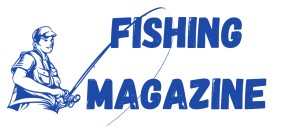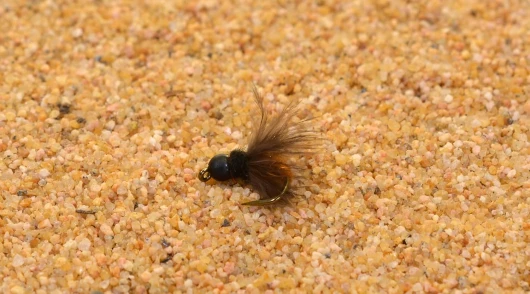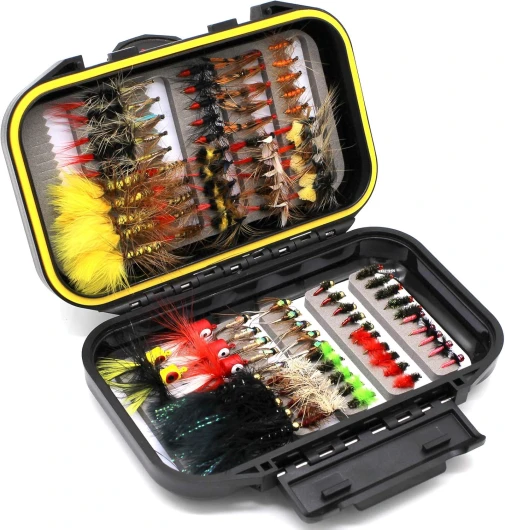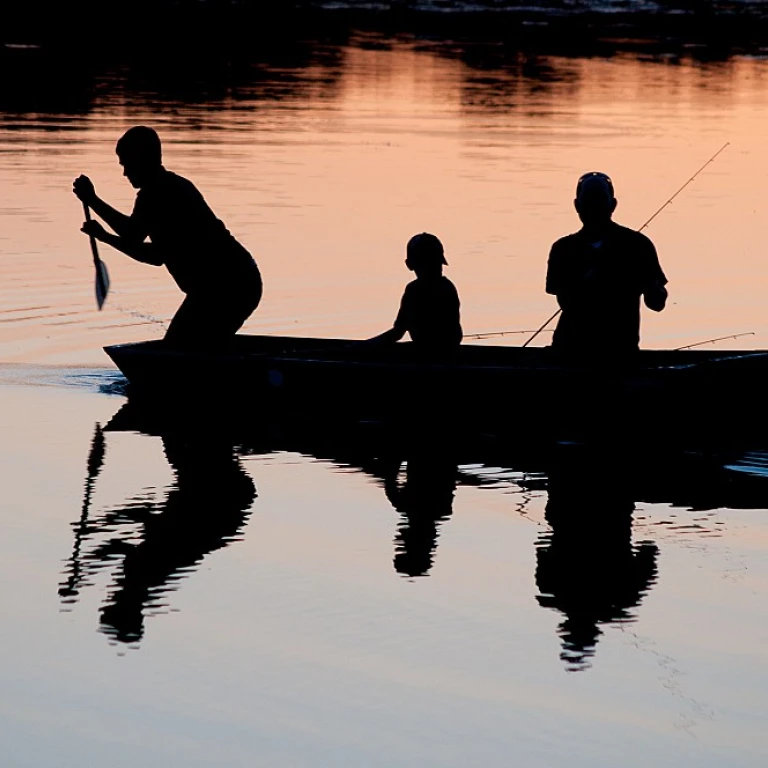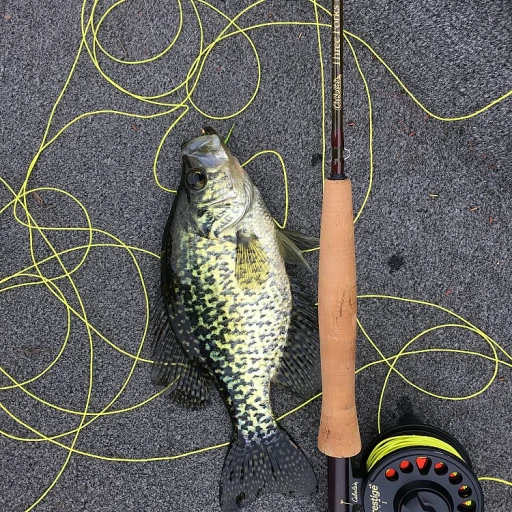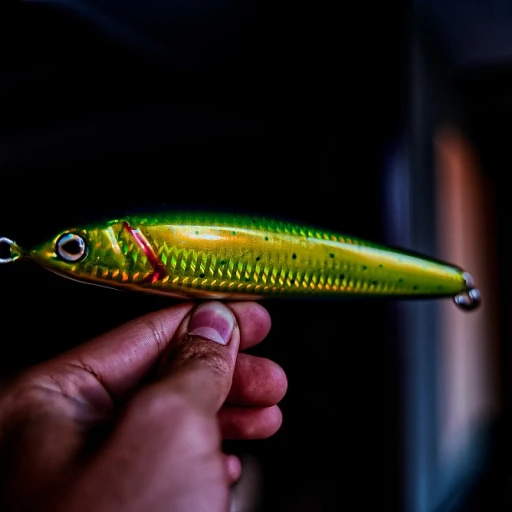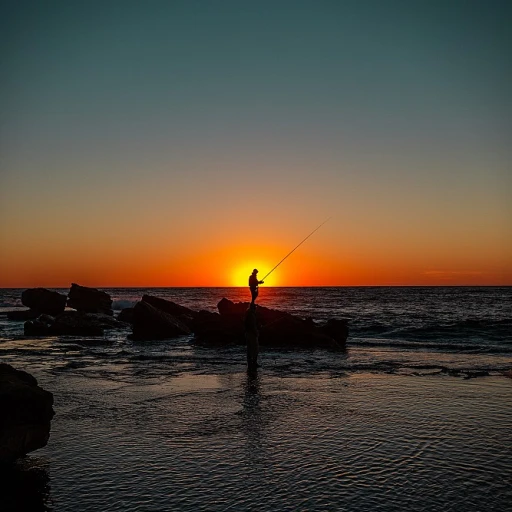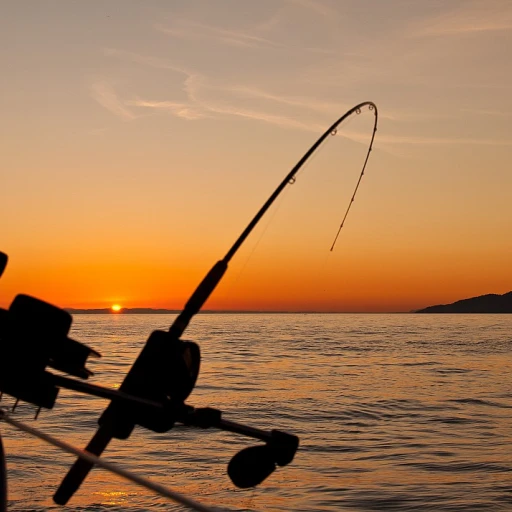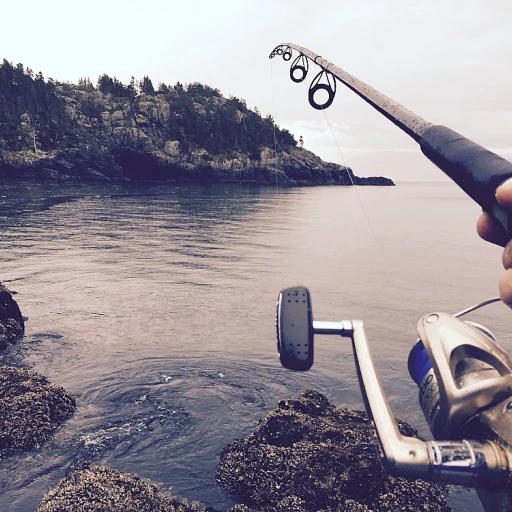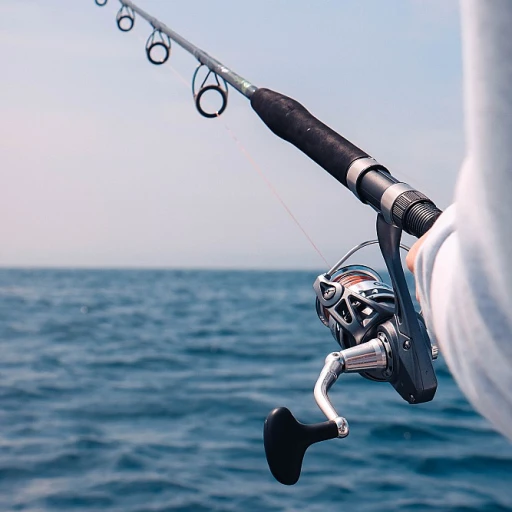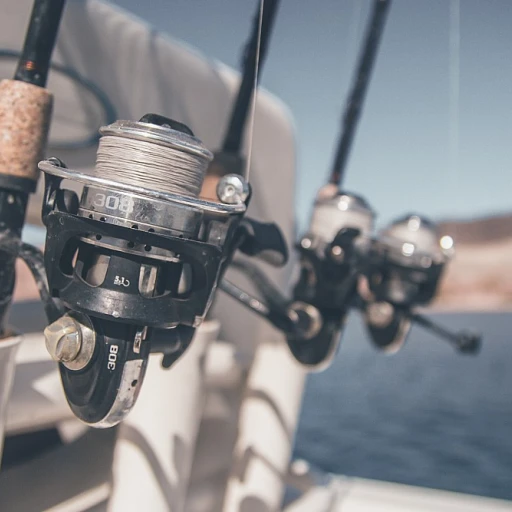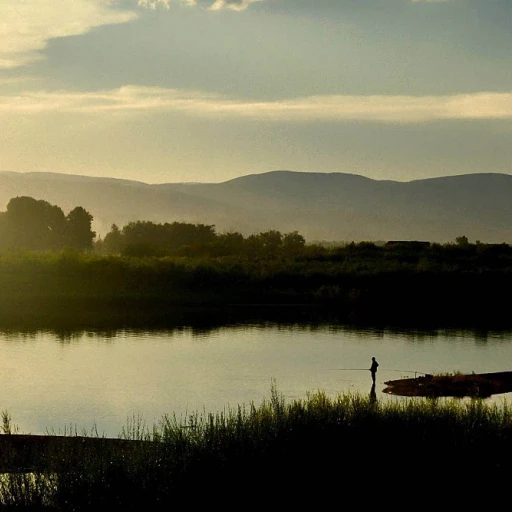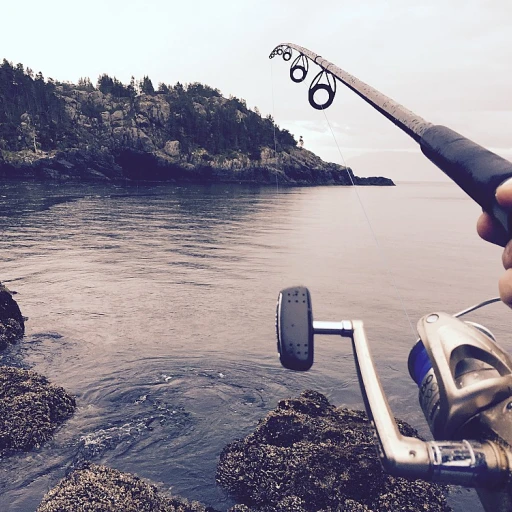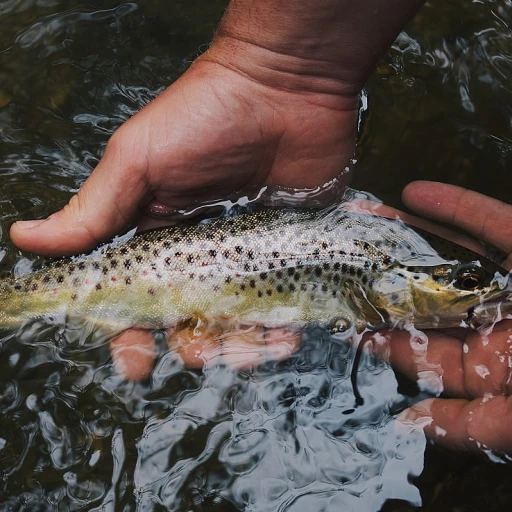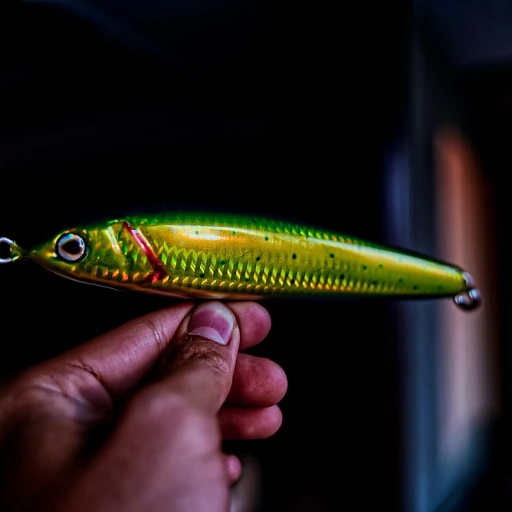
The Lifecycle of the October Caddis
The Intricate Journey of the October Caddis
Understanding the lifecycle of the October caddis is crucial for any passionate angler, especially those dedicated to fly fishing. This magnificent insect goes through a fascinating metamorphosis that begins as a caddis larva. These larvae are capable of thriving under water, using silk to create protective cases from sand and debris, a characteristic many fishermen find intriguing.After months of dedication to growth, the larvae transform into a caddis pupa. This transitional stage is where the caddis prepares for its ascent to the surface, an event eagerly anticipated by trout and anglers alike. The October caddis pupa is a spectacle, often visually distinctive with its bright colors that range from orange to brown, a lure in itself for the seasoned trout.
The caddis finally emerges as an adult fly, contributing to the early stages of its lifecycle known as the hatch. This emergence is typically accompanied by a bustling autumn activity where regular and dry fly options open water pathways to capture dynamic scenes, elevated by the unique soft hackle of the fly. For anglers, being able to present effective representations of this fly tying art can dramatically enhance catch rates.
For those interested in delving deeper into the world of fly fishing artistry, there are resources available that explore the artistic nuances of creating these effective flies. These meticulous practices not only reflect craftsmanship but also cater to the practicalities of choosing selection units that mimic the october caddis effectively, often sold at sale price or unit price depending on demand.
Recognizing the repeated appearances of this fly throughout the year provides anglers with the opportunity to prepare and stock up on their free fly selection, accommodating the needs during peak and off-peak fishing windows. As any experienced fisherman will attest, appreciating these moments of life cycle change plays a vital role in the successful practice of trout October fly fishing.
Why the October Caddis Matters to Anglers
The Significance of October Caddis for Fly Fishermen
The allure of the October Caddis for fly fishing enthusiasts stems from its distinct role in the ecosystem and its appeal to trout. Often referred to as "nature's pumpkin," the October Caddis makes its appearance in the early fall, bringing vibrant flashes of orange to the waters. This timing coincides with the trout's increased feeding activity as they prepare for the winter months, leading to exciting fishing opportunities.
October is an optimal time to target trout hungry for a high-energy food source, such as the caddis larva, pupa, or adult stages. The life cycle of the October Caddis plays a critical role here. The emerging adults and the soft hackle caddis flies stimulate aggressive feeding behavior, creating a dynamic environment for fly anglers.
Additionally, the varied life stages of the October Caddis offer an opportunity to utilize diverse fly fishing techniques, from dry flies to nymphs. This versatility is one of the reasons why fly fishing enthusiasts have a unique preference for these insects, each stage offering a unique angle for approach. Moreover, the availability of caddis flies in an array of sizes provides further flexibility, allowing anglers to match the hatch effectively.
While some might express concerns about the availability and price of quality flies, anglers can often find sale prices on bulk fly tying materials or fly fishing gear, which eases the burden on their wallets. The regular presence of sales ensures that stocking up on flies—even the specific October Caddis variations—remains cost-effective.
In conclusion, the October Caddis is more than just another insect in the ecosystem. It marks a significant event in the fly angler's calendar, opening a window into an engaging and refreshing fly fishing experience. The insect's life cycle, combined with its appeal to trout and the possibilities it offers for varied fishing techniques, makes it a must-know target for any avid angler.
Effective Fishing Techniques for October Caddis
Mastering Techniques for a Rewarding Catch
Effectively fishing the October Caddis requires an understanding of not just their lifecycle, but also the mastery of diverse techniques that align with their behavior. The October Caddis, known for its prominence in the fall, offers a unique opportunity for anglers aiming to catch elusive trout. Here’s how you can improve your game during this hatch season:- Early Indications: Pay attention to the water temperature and the appearance of caddis pupa in the shallows. Being early, or at least punctual, is crucial to catching the start of the hatch.
- Selective Flies: The choice of flies can make or break your success. Opt for a dry fly that imitates the October Caddis with its signature orange hue. Consider using a regular caddis larva pattern during the larva stage, switching to a soft hackle fly as they transition to pupae.
- Fly Tying Proficiency: To adapt to various conditions, having a range of self-tied flies at your disposal is beneficial. Investing in a fly tying kit can ensure you have a selection full of your preferred patterns at hand throughout the season.
- Strategic Water Presentation: Utilize techniques such as dead drifting your nymphs or swinging them in riffles and pools where the October Caddis typically emerges. Fine-tuning your cast with the water flow will further increase your chances of enticing a strike.
- Mindful Gear Selection: Ensure you have appropriate gear, including a reliable boat trailer bow stop to enhance your overall fishing experience, especially if different fishing locations are part of your strategy.
- Adaptability is Key: Weather changes can impact the hatch; thus, being flexible in your approach can maximize your catch rate. Keep track of weather forecasts to plan your fishing trips accordingly, ensuring you can make the most out of this enriching fly fishing pursuit.
Essential Gear for October Caddis Fishing
Essential Equipment for Targeting October Caddis
When angling for the elusive October Caddis, having the right gear can be the difference between a successful day of fishing and a frustrating one. Here’s a straightforward rundown of essential equipment to elevate your fly fishing endeavors. First off, selecting the right flies is crucial. Options include caddis larva, pupa, and dry fly patterns. The caddis larva and pupa are ideal for early in the hatch when trout might be seeking an easy meal below the water surface. For a realistic presentation, opt for flies tied with soft hackle to mimic the movement of a natural insect. As the hatch progresses, a dry fly imitating the October Caddis fluttering on the surface is essential. Choosing the correct size and color for your flies is vital. Typically, these are tied in orange or brown to match the natural colors of the insect. Sizes can vary, but a regular size matches the hatch more closely, ensuring better response from the trout. Next, let’s consider rods and reels. For fly fishing October Caddis, a medium-action rod offers the versatility needed to cast both nymphs and dry flies effectively. A reliable reel with a consistent drag system ensures you can manage the unpredictable runs of a trout once hooked. Lines and leaders mustn't be overlooked. For nymphing or presenting flies sub-surface, floating lines and longer leaders enable better control and presentation of your fly. On the other hand, shorter leaders are ideal for dry fly selection, ensuring accurate casting. Don't forget the importance of a fly tying kit. Tying your flies gives you the freedom to customize patterns—like adding a bit more hackle or adjusting the body color—to better suit your local water conditions and the trout’s preferences. Finally, keep an eye on prices and sales to ensure you're getting the most value for your investment. Equipment like a good fly tying unit or a selection of flies can vary greatly in price. Checking the sale price periodically can offer significant savings and improve your kit without breaking the bank. Investing in this essential gear provides a tangible advantage while fly fishing during the October Caddis hatch, enhancing not just your catch rate, but your overall enjoyment on the water.Challenges in Fishing the October Caddis Hatch
Overcoming the Obstacles of the October Caddis Hatch
Fishing the October Caddis hatch presents unique challenges that can test even the most seasoned anglers. Understanding these hurdles is crucial for a successful fly fishing experience. Here are some common obstacles you might encounter:
- Timing the Hatch: The October Caddis hatch can be unpredictable. It often occurs in the early morning or late afternoon, requiring anglers to be vigilant and adaptable. Missing the hatch means missing out on prime fishing opportunities.
- Choosing the Right Fly: Selecting the appropriate fly is critical. The October Caddis larva, pupa, and adult stages all require different fly patterns. A dry fly might be effective during the hatch, while a soft hackle or nymph could be better when the caddis is in its larva or pupa stage.
- Water Conditions: The water temperature and flow can significantly impact the hatch. Cooler water might delay the hatch, while faster currents can make it challenging to present your fly effectively. Monitoring water conditions is essential for timing your fishing trip.
- Trout Behavior: Trout can be selective feeders during the October Caddis hatch. They might ignore your fly if it doesn't match the size or color of the natural caddis. Regularly adjusting your fly selection is crucial to entice these picky eaters.
- Gear Limitations: Having the right gear can make or break your fishing experience. Investing in quality fly tying materials, such as hackle and caddis larva patterns, can enhance your chances of success. Be mindful of the unit price and look for sale price opportunities to stock up on essential gear.
While these challenges can be daunting, they also add to the thrill of fly fishing during the October Caddis hatch. By understanding the life cycle of the caddis and adapting your techniques, you can improve your chances of landing that elusive trout.
Environmental Impact and Conservation Efforts
Understanding Environmental and Conservation Aspects
When it comes to the bustling activity around the October caddis hatch, it’s crucial to consider the environmental implications and the concerted conservation efforts that surround this phenomenon. The October caddis plays a vital role in the aquatic ecosystem, serving as a food source for various species, especially trout. However, the impact of recreational fishing on this delicate balance should not be overlooked.
The act of fishing the October caddis—whether using a dry fly, a caddis pupa, or replicating the nymph stage—can sometimes exert pressure on local fish populations. Consequently, responsible fishing practices are paramount. Anglers are encouraged to practice catch and release, ensuring that the trout population remains robust throughout the season and sustains the caddis lifecycle.
Additionally, environmental awareness extends to the preservation of clean water habitats. Pollution, water temperature changes, and habitat destruction can significantly affect the success of the caddis hatch. As fly fishermen, prioritizing sustainable practices, such as selecting eco-friendly gear and participating in conservation initiatives, can make a substantial difference. Be mindful of the products' impact you purchase and their disposal after use.
Finally, active participation in local conservation programs can aid significantly. Supporting sales that donate a percentage of proceeds to conservation efforts or engaging in volunteer opportunities are excellent ways to contribute. Every sale price and unit price, from flies to specialized fly tying gear, represents an opportunity to support ecological preservation and ensure that the October caddis hatch continues to thrive for generations of anglers.
